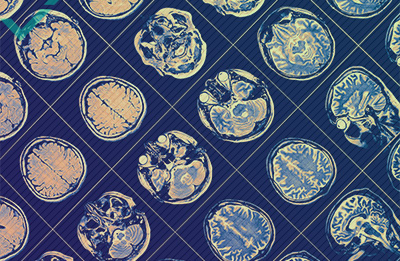Every creative person, designers included, may require some additional inspiration from time to time. In fact, inspiration is often vital to people’s productivity, creativity, and growth. Lucky for us, inspiration isn’t very hard to come by these days. In February 1984, a group of innovators created TED, a conference held under the slogan “ideas worth spreading”. Since 1990, the conference has been held annually; and by now, TED is probably the most influential and inspirational event of its kind, held in many world countries and translated into 100+ languages. You might have seen some great examples of TED Talks about language in our recent blog post. Today, we want to return to the TED topic again, this time focussing on great talks about design.
1: HOW GIANT WEBSITES DESIGN FOR YOU (AND A BILLION OTHERS, TOO) BY MARGARET GOULD STEWART
Margaret Gould Stewart is Facebook’s director of product design, so she definitely knows a thing or two about designing for a big audience. In her TED Talk, she extrapolates on this further. According to Stewart, designing on a massive scale is difficult for many reasons, but the most challenging is the need for designers to maintain two characteristics—audacity and humility.
You need audacity to believe that the thing you’re making is something the entire world wants and needs, and humility to understand that as a designer, it’s not about you or your portfolio, it’s about the people that you’re designing for, and how your work just might help them live better lives, says Stewart. She offers some amazing examples of how Facebook’s designers approach change and innovation, also providing some interesting tips on designing for a large audience. However, we won’t share all of them—you’ll need to watch the video to find out!
2: HOW BEAUTY FEELS BY RICHARD SEYMOUR
Designers want to create something that makes a lasting impression and makes people feel touched in the way they intended. But is it even possible? Richard Seymour wonders about this very question in his TED Talk. He firmly believes that people are able to feel beauty, and that their feelings will differ depending on their personal preferences and past experiences. For example, when people see a simple flower drawing, they might not react to it at all.

However, if they were told that this drawing is the last act on Earth of a little girl named Heidi before she died of bone cancer, they would definitely feel something—and feel it strongly. Seymour explains that adding some information to the visual could cause certain emotional reactions; however, that’s not always feasible. In most cases, people are driven by their first impression and what they feel in that moment. Therefore, it’s important to understand how people react to certain stimuli when it comes to designing goods for them.
3: THE FIRST SECRET OF DESIGN IS… NOTICING BY TONY FADELL
Tony Fadell is the concept creator and designer of the iPod. Having worked in high-profile product design for years, he’s noticed that while people struggle with major innovations at first, they get used to them really quickly. In his TED Talk, Fadell uses driving as an example. Many beginner drivers feel overwhelmed the first few times they’re behind the wheel. They might not even be able to talk or listen to music because it distracts them from noticing the signs, the traffic, and so on.
However, as time goes on, driving becomes second nature to them. After some time, they could easily talk or listen to music because the process has become habitual. While this is definitely good for our daily functioning, this could be bad (or really bad) when it comes to product design. When we get used to something, we start taking these things for granted and stop thinking of ways to improve them or to solve certain problems they have. How can you change that? Fadell provides some valuable tips on the subject, so check out his presentation to learn more.
4: 3 WAYS GOOD DESIGN MAKES YOU HAPPY BY DON NORMAN
If you are interested in product design, you’ve probably read Don Norman’s book “The Design of Everyday Things”. It’s well-written and shares a number of valuable tips for those who design things that are supposed to make people’s lives better.

In this TED Talk, Norman focusses on the emotions designs incite. He believes there are three levels of processing. First is the visceral level: the emotions we feel because they are built into our brains. We like bright colours because we have adapted through biology to feel that way. We also like symmetrical faces (to a certain extent), dislike temperatures that are either too hot or too cold, etc. The second level is the behavioural one. We like to be in control; we like things that are familiar or easy to understand. A design that includes good usability is definitely a behavioural one.
And then there’s the third level, the reflective one. It comes from our consciousness. Reflective designs appeal to something in us, be it our image or our beliefs. We can buy expensive items to bring attention to ourselves or to impress; at the same time, we can buy other items because we care about the environment, for example. It often has little to do with the functionality of the product. Understanding this is crucial for design creation. In order for designs to be effective, you need to know what level of processing they appeal to.
5: DESIGNERS—THINK BIG! BY TIM BROWN
What is design about? Creating products that look good? Yes. Creating products that sell better? Yes. Creating products that are a bit easier to use? Also yes. However, to some designers, Tim Brown included, this is not enough anymore. In his TED Talk, Brown explains that design thinking today could be more powerful than ever. Design thinking is the ability to exploit opposing ideas and opposing constraints to create new solutions, which in the case of design means balancing desirability with economic viability and technical feasibility.
What’s even more important is that today’s designers can stretch that balance to the absolute limit, creating powerful, long-lasting solutions. However, this can only happen when designers stop focussing on small details all the time and start thinking big again. This happens through the application of design thinking to new kinds of problems, such as global warming, clean water, and healthcare. The most important aspect is to get more designers to think this way and try to work on a larger scale.
A WORLD BUILT BY DESIGN
These TED Talks are quite different from your run-of-the-mill presentations, but equally powerful nonetheless. In fact, you don’t need to be a designer to find them interesting and useful. So, if you feel like you want some design inspiration or want to learn something new about design in general, just press play and start listening to these amazing speakers. We promise they are all worth your time!


